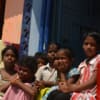International development studies at UCLA: What you need to know
Here’s what you need to know about the increasingly popular international development studies at UCLA.
UCLA’s undergraduate International Development Studies Program had about 25 students when it opened in 1987, making it one of the smaller programs on the school’s sprawling Los Angeles campus, according to department chairman Mike Lofchie. Times have changed. This year, UCLA has 430 students in the development studies program, which, according Lofchie, a specialist in comparative politics and African studies, makes the major larger than some of the departments on the school’s Los Angeles campus. “It has grown dramatically in recent years,” he said. “It’s become a popular major. Most of the growth has occurred in the last five years.” Challenges with growing popularity The fast-growing popularity of the program is a testament to how students in recent years have become more aware of global crises that require close attention from nongovernmental organizations and international aid groups. Conflicts in Darfur, Iraq and Afghanistan are now front-page news. Socially aware students are looking for ways to confront these crises in their professional lives, according to Lofchie. This popularity has presented a challenge for UCLA. With no current entry requirement other than admission to the university, the program has grown too large, Lofchie said. This makes it difficult for students to get into the required courses and for teachers to spend enough time with individual students. “Everybody agrees that 430 [students] is pretty big in the sense of the strain it puts on UCLA’s resources,” Lofchie said. “A good part of the year is going to be figuring out how big the program will be. Three hundred [students] is a number that gets thrown around a lot.” More than grades Limiting the program to 300 students presents yet another challenge. In most instances, grade point average can be used to limit the size of a program, but this strategy won’t work for UCLA’s development program. “You have very idealistic undergrad students. It appeals to students who want to go out in the world, who want to go out on the Third World and improve conditions out there,” Lofchie said. “We tend to get students with high GPA. These are very motivated students. So GPA cutoff is hard.” Lofchie admits that high GPAs are necessary for students to be competitive at the graduate level; in fact, UCLA encourages international development students to attend graduate school after finishing the undergraduate program. Without a graduate degree, it would be very difficult for students to gets jobs in the international development field, Lofchie argues. “Much of the work that would go on in the development world requires certain professional skills,” he said. “Students are aware that if they want to continue they have to contemplate a graduate program there. A master’s in public policy is a popular choice.” Lofchie named the University of Chicago, New York University and the University of California at Berkeley as popular graduate school choices for UCLA undergrads. Because schools like these are extremely competitive, the department has dedicated academic advisers to assist students in making graduate school decisions. A balanced, interdisciplinary program According to the department’s website, development studies at UCLA are “balanced between applied, field case-study learning and theoretical, conceptual knowledge.” This gives students both field experience and knowledge about how to operate within the bureaucracies that fund development programs. The program is also interdisciplinary in nature. It requires students to study subjects as diverse as economic and women’s studies. Students can specialize in conflict resolution, survival of indigenous societies, food security and self-sufficiency, and other issues. Students are also encouraged to travel internationally to gain field experience with a local, national or international NGO. Read more career advice articles.
UCLA’s undergraduate International Development Studies Program had about 25 students when it opened in 1987, making it one of the smaller programs on the school’s sprawling Los Angeles campus, according to department chairman Mike Lofchie.
Times have changed.
This year, UCLA has 430 students in the development studies program, which, according Lofchie, a specialist in comparative politics and African studies, makes the major larger than some of the departments on the school’s Los Angeles campus.
This article is exclusively for Career Account members.
Unlock this article now with a 15-day free trial of a Devex Career Account. With a Career Account subscription you will get:
- Full access to our jobs board, including over 1,000 exclusive jobs
- Your Devex profile highlighted in recruiter search results
- Connections to recruiters and industry experts through online and live Devex events
Start my 15-day free trialAlready a user?
Printing articles to share with others is a breach of our terms and conditions and copyright policy. Please use the sharing options on the left side of the article. Devex Pro members may share up to 10 articles per month using the Pro share tool ( ).




